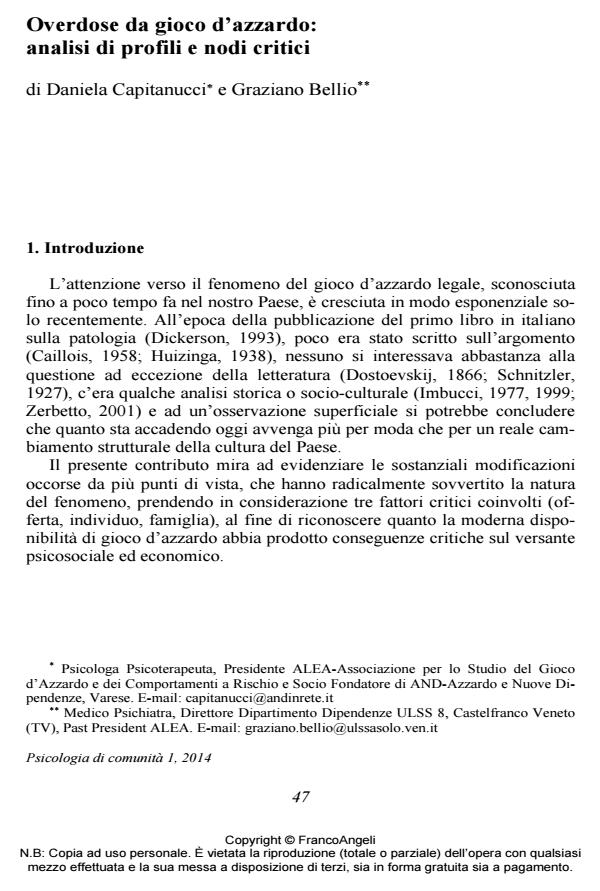Overdose da gioco d’azzardo: analisi di profili e nodi critici
Titolo Rivista PSICOLOGIA DI COMUNITA’
Autori/Curatori Daniela Capitanucci, Graziano Bellio
Anno di pubblicazione 2014 Fascicolo 2014/1
Lingua Italiano Numero pagine 12 P. 47-58 Dimensione file 78 KB
DOI 10.3280/PSC2014-001004
Il DOI è il codice a barre della proprietà intellettuale: per saperne di più
clicca qui
Qui sotto puoi vedere in anteprima la prima pagina di questo articolo.
Se questo articolo ti interessa, lo puoi acquistare (e scaricare in formato pdf) seguendo le facili indicazioni per acquistare il download credit. Acquista Download Credits per scaricare questo Articolo in formato PDF

FrancoAngeli è membro della Publishers International Linking Association, Inc (PILA)associazione indipendente e non profit per facilitare (attraverso i servizi tecnologici implementati da CrossRef.org) l’accesso degli studiosi ai contenuti digitali nelle pubblicazioni professionali e scientifiche
Giocare d’azzardo è un’attività rischiosa per il benessere e la qualità di vita individuale, familiare e sociale. L’incremento di accessibilità ai giochi e il conseguente sviluppo di problemi di dipendenza in una parte dei giocatori hanno portato all’attenzione degli operatori socio-sanitari situazioni complesse. Tra i molteplici fattori di rischio, quelli inerenti la struttura dei giochi hanno potenzialità di condizionamento del comportamento del giocatore. Le conseguenze dannose del gioco d’azzardo vanno oltre la dimensione individuale e coinvolgono il nucleo familiare nel suo complesso. Se il modello eziopatogenetico di Blaszczynski può essere utile per l’inquadramento clinico del giocatore, il modello stress-strain-copesupport di Orford può rappresentare una guida per gli interventi di supporto familiare.
Parole chiave:Gioco d’azzardo, problemi azzardo-correlati, condizionamento operante, modello eziopatogenetico, modello stress-strain-cope-support.
Daniela Capitanucci, Graziano Bellio, Overdose da gioco d’azzardo: analisi di profili e nodi critici in "PSICOLOGIA DI COMUNITA’" 1/2014, pp 47-58, DOI: 10.3280/PSC2014-001004